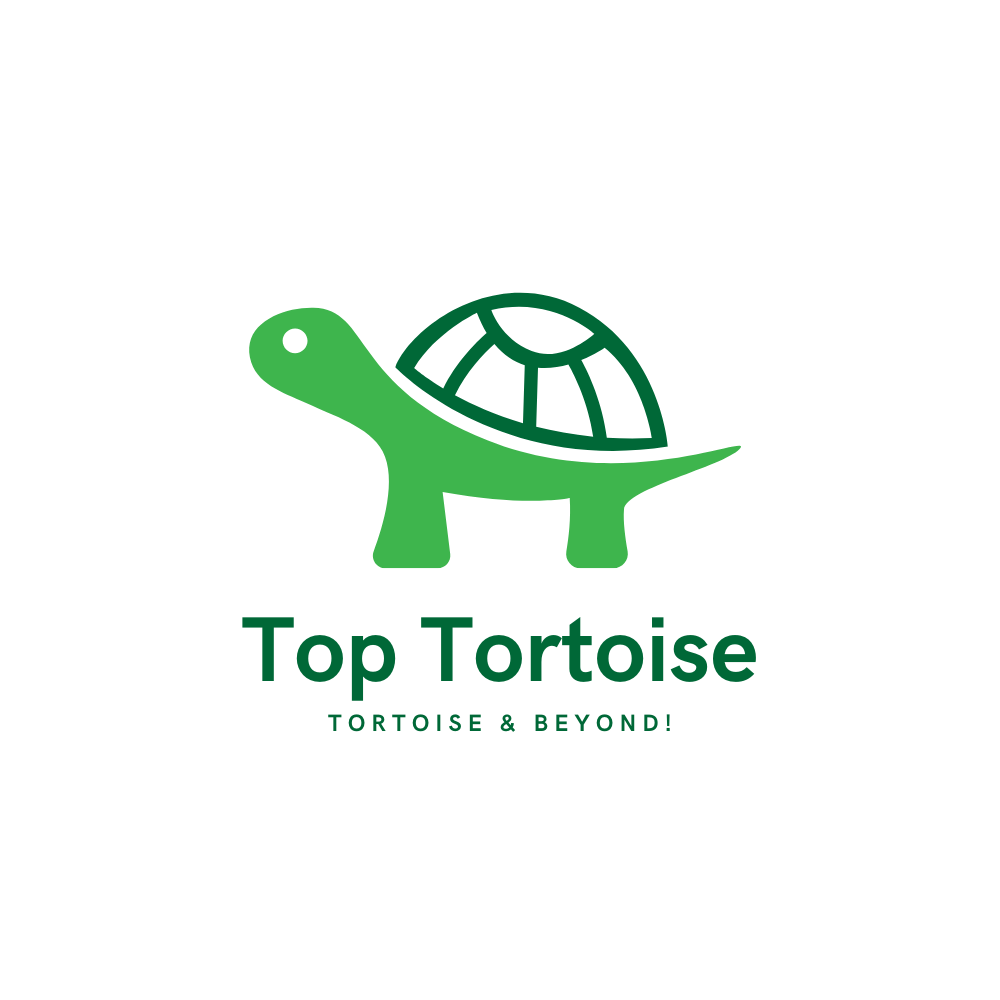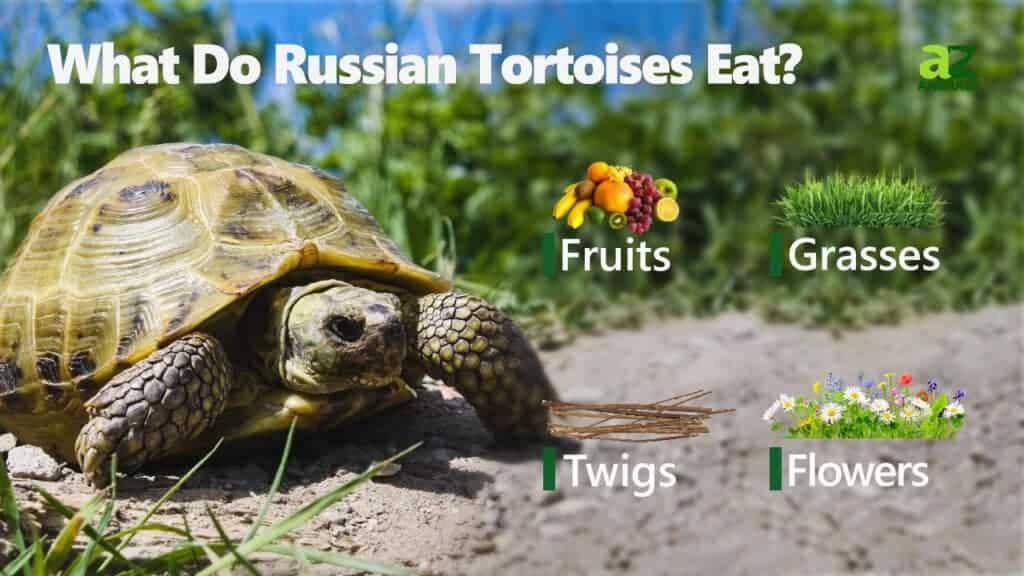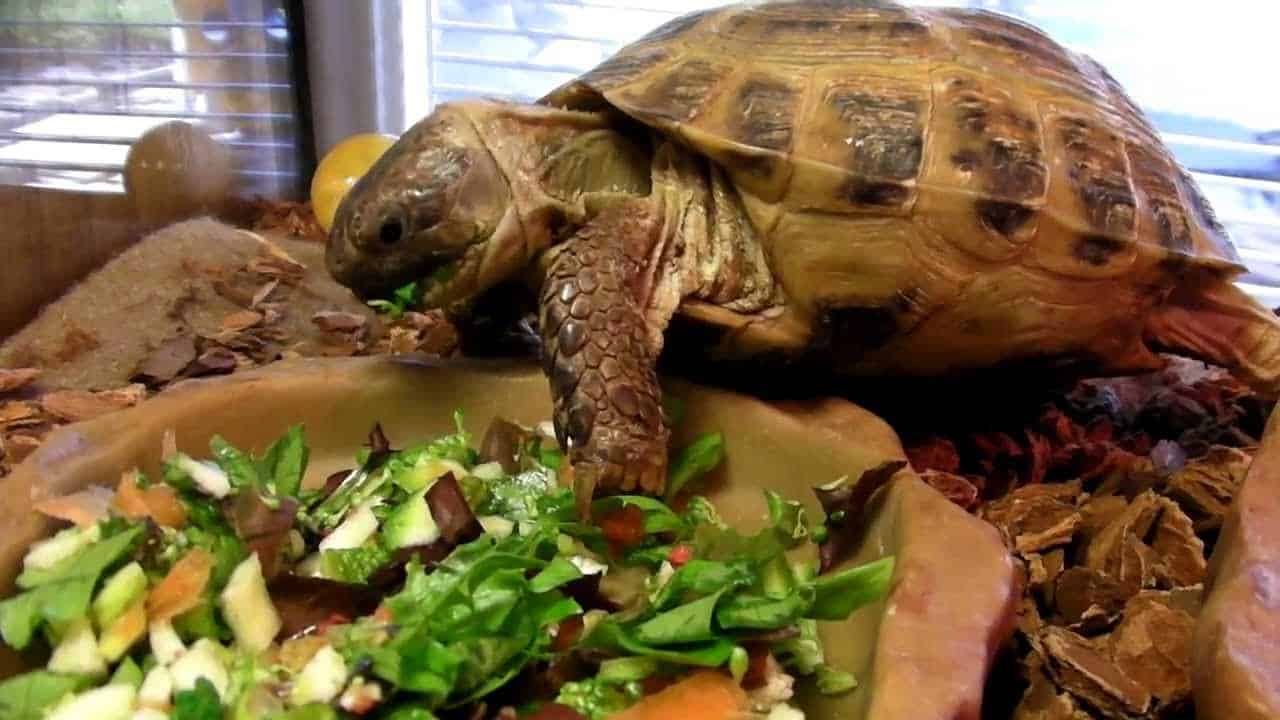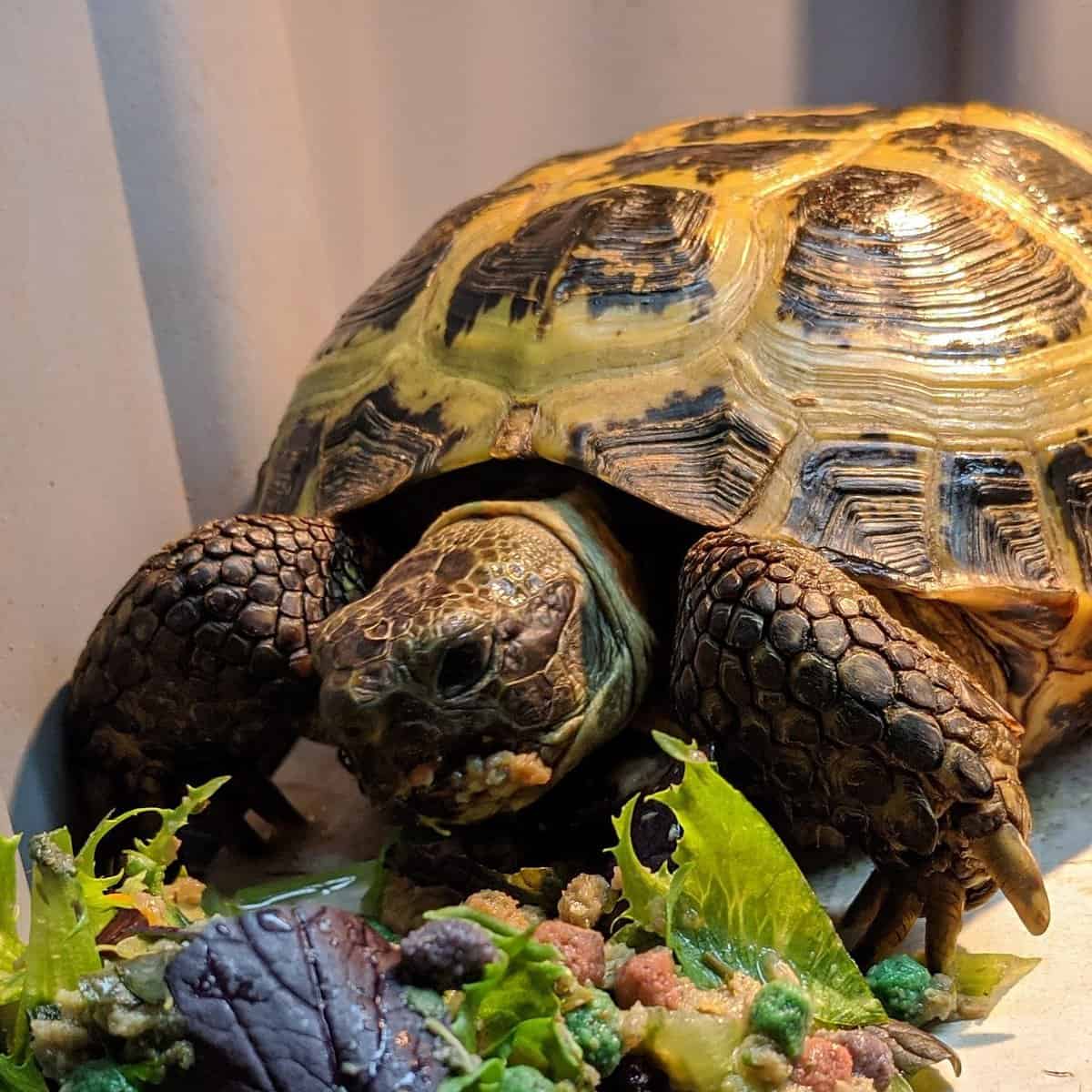Russian tortoises eat a diet consisting mainly of leafy greens, such as dandelion greens and collard greens, along with flowers, weeds, and occasionally fruits.
Feeding Your Russian Tortoise: A Comprehensive Guide to Their Diet
Russian tortoises are small, hardy reptiles that make great pets for both beginners and experienced reptile enthusiasts. They are native to the arid regions of Central Asia and are well adapted to survive in harsh desert conditions. As pets, Russian tortoises require proper nutrition to ensure their health and well-being.
Proper nutrition is crucial for the overall health and longevity of Russian tortoises. A balanced diet that meets their specific dietary requirements is essential to prevent nutritional deficiencies and other health issues. In the wild, Russian tortoises primarily feed on a variety of grasses, weeds, and leafy greens. As pet owners, it is our responsibility to replicate this natural diet as closely as possible.
Russian Tortoise Diet:
| Food Category | Examples | Notes |
|---|---|---|
| Staple Greens | Dandelion greens, collard greens, mustard greens, turnip greens, endive, escarole, romaine lettuce | Make up the majority of the diet. |
| Other Leafy Greens | Kale, spinach, Swiss chard, parsley, watercress, spring mix | Feed in moderation due to high oxalic acid content, which can interfere with calcium absorption. |
| Weeds and Flowers | Dandelion leaves and flowers, hibiscus flowers, clover, plantain | Offer a variety of weeds and flowers for a more natural diet. |
| Vegetables | Squash, carrots, corn, bell peppers, sweet potatoes, prickly pear cactus pads | Provide occasional variety and additional nutrients. |
| Fruits | Strawberries, blueberries, raspberries, apples (in small amounts) | Offer as occasional treats due to high sugar content. |
| Hay | Timothy hay, orchard grass hay | Provide a constant source of fiber. |
| Supplements | Calcium powder with vitamin D3 (especially for indoor tortoises or those with limited sunlight exposure) | Consult a veterinarian for proper dosage and frequency. |
| Foods to Avoid | Iceberg lettuce, spinach (in large amounts), fruits (in large amounts), processed foods, dairy products, meat, high-protein foods, foods treated with pesticides or herbicides | These foods can be harmful or lack nutritional value for tortoises. |
Understanding the Nutritional Needs of Russian Tortoises
Russian tortoises have specific dietary requirements that must be met in order for them to thrive. Their diet should consist mainly of high-fiber, low-protein foods. They require a diet that is low in fat and high in calcium and other essential nutrients.
In the wild, Russian tortoises primarily feed on a variety of grasses, weeds, and leafy greens. These foods provide them with the necessary fiber, vitamins, and minerals they need to stay healthy. It is important to replicate this natural diet as closely as possible when feeding your pet tortoise.
The Importance of Variety in a Russian Tortoise’s Diet
A varied diet is important for Russian tortoises as it ensures they receive a wide range of nutrients necessary for their overall health and well-being. Feeding them a variety of foods also helps prevent boredom and encourages natural foraging behaviors.
In addition to grasses, weeds, and leafy greens, Russian tortoises can also be fed a variety of vegetables and fruits. Some suitable options include dandelion greens, collard greens, kale, spinach, carrots, bell peppers, and strawberries. It is important to offer a mix of different vegetables and fruits to provide a balanced diet.
Feeding Your Russian Tortoise a Balanced Diet
To create a balanced diet for your Russian tortoise, it is important to include foods from different food groups. These include leafy greens, vegetables, fruits, hay, and grasses. Each food group provides different nutrients that are essential for their health.
Leafy greens such as dandelion greens, collard greens, and kale should make up the majority of your tortoise’s diet. These greens are high in fiber and provide essential vitamins and minerals. Vegetables such as carrots, bell peppers, and squash can be offered in smaller quantities to provide additional nutrients.
Fruits should be offered sparingly as they are high in sugar. Suitable options include strawberries, raspberries, and melons. Hay and grasses should also be provided to ensure proper digestion and to help wear down their beaks.
The Role of Calcium and Vitamin D in a Russian Tortoise’s Diet
Calcium and vitamin D are crucial for the health of Russian tortoises. Calcium is necessary for the development and maintenance of strong bones and shells, while vitamin D helps with the absorption of calcium.
To ensure your tortoise receives enough calcium, you can provide calcium-rich foods such as cuttlebone or calcium supplements. It is also important to provide access to natural sunlight or UVB lighting as this helps with the production of vitamin D.
Avoiding Foods That Are Harmful to Russian Tortoises
There are certain foods that should be avoided when feeding your Russian tortoise as they can be harmful to their health. These include foods that are high in fat, sugar, or salt. Processed foods, dairy products, and meat should also be avoided.
Foods that are toxic to humans such as onions, garlic, and avocados should never be fed to your tortoise. These foods can cause digestive issues and other health problems.
Feeding Your Russian Tortoise Fresh Vegetables and Fruits
Fresh vegetables and fruits are an important part of a Russian tortoise’s diet. They provide essential vitamins and minerals that are necessary for their overall health. Some suitable options include dandelion greens, collard greens, kale, spinach, carrots, bell peppers, and strawberries.
When feeding your tortoise vegetables and fruits, it is important to wash them thoroughly to remove any pesticides or chemicals. They should be chopped into small, bite-sized pieces to make it easier for your tortoise to eat. It is also important to offer a variety of different vegetables and fruits to provide a balanced diet.
Providing Your Russian Tortoise with High-Quality Hay and Grasses
Hay and grasses are an important part of a Russian tortoise’s diet. They provide essential fiber that helps with digestion and prevents constipation. They also help wear down their beaks, which continuously grow throughout their lives.
There are different types of hay and grasses that can be included in your tortoise’s diet. Timothy hay, orchard grass, and Bermuda grass are all suitable options. It is important to provide fresh hay and grasses regularly to ensure your tortoise has access to high-quality fiber.
Supplementing Your Russian Tortoise’s Diet with Commercial Pellets
Commercial pellets can be a good addition to your Russian tortoise’s diet as they provide additional nutrients that may be lacking in their natural diet. However, it is important to choose high-quality pellets that are specifically formulated for tortoises.
When choosing pellets, look for ones that are high in fiber and low in protein and fat. Avoid pellets that contain artificial colors, flavors, or preservatives. Pellets should only make up a small portion of your tortoise’s diet and should not be the main source of nutrition.
How Often Should You Feed Your Russian Tortoise?
The frequency and amount of food you should feed your Russian tortoise will depend on their age and size. Young tortoises should be fed daily, while adult tortoises can be fed every other day or a few times a week.
It is important not to overfeed your tortoise as this can lead to obesity and other health issues. A good rule of thumb is to offer them a portion of food that is roughly the size of their shell. It is also important to monitor their weight and adjust their feeding schedule accordingly.
Tips for Maintaining a Healthy and Happy Russian Tortoise
In addition to providing a balanced diet, there are other factors that can impact the health and happiness of your Russian tortoise. Proper housing, lighting, and temperature are all important considerations.
Russian tortoises require a spacious enclosure with plenty of room to roam and explore. The enclosure should also have a secure lid to prevent escape. A heat lamp or UVB lighting should be provided to ensure they receive the necessary warmth and UVB rays for proper digestion and shell health.
It is also important to provide hiding spots and enrichment activities such as climbing structures or shallow water dishes for your tortoise to soak in. Regular veterinary check-ups are also recommended to ensure your tortoise remains in good health.
In conclusion, providing a proper diet is essential for the health and well-being of Russian tortoises. A balanced diet that includes a variety of foods from different food groups will ensure they receive all the necessary nutrients they need. It is important to avoid foods that are harmful to their health and to provide access to calcium and vitamin D. By following these guidelines, you can help your Russian tortoise live a long, healthy, and happy life.
Originally posted 2024-02-08 09:34:53.



